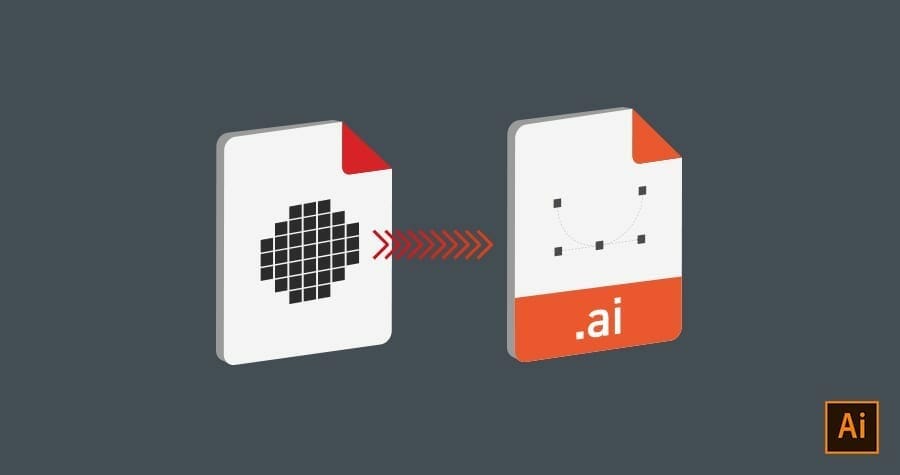

- #ADOBE ILLUSTRATOR CONVERT RASTER TO VECTOR HOW TO#
- #ADOBE ILLUSTRATOR CONVERT RASTER TO VECTOR FREE#
While these image files are common, there are some limitations. Some of the most common raster image formats are: Scalable vector graphics (SVGs) are also required for print and cut machines, such as the Cricut personal laser cutter, allowing the machine to read and execute the file information accurately.Īs a designer, you’ll work with a variety of file formats. Embroidery machines, for example, require vector images to configure a map of stitches properly. With the vector format, your client can use the same design file for large projects, including billboards and banners, and small projects like apparel embroidery and business cards.Įven when resizing isn’t required, there are other applications where only vector graphics are compatible. Using a Vector format allows you to create striking images that are scalable with zero loss in quality.
#ADOBE ILLUSTRATOR CONVERT RASTER TO VECTOR HOW TO#
Why Convert from Raster to Vector?īefore jumping into the process of how to vectorize an image, let’s quickly re-examine the benefits of using vectors. When life gives you raster images, here is what you need to know about vectorizing them. The mathematical proportions allow scalability without losing image quality, making vector images best suited for most graphic design applications. Vector graphics, on the other hand, store the same data as a set of mathematically defined points, lines, or shapes. This loss of image quality comes from the file type, which stores image data as pixels.

Raster images can be used in many scenarios, but can become pixelated or blurry when resized. What does it mean to vectorize an image? It’s a simple file conversion, but to help you better understand the process, we’ll break down the two categories of image file formats. That’s when you’ll need to know a little more about the process of vectorizing an image. If you’re lucky, it will be a compatible file, but the format you’re given to work with often needs a little tweaking. But sometimes, a client asks you to incorporate existing files into your design. When starting from scratch, it’s generally easy to design in a vector file format. Reply to this post to share your observations with us.Vectorizing Images: Why and How to Vector TraceĪs an aspiring graphic designer or illustrator, you know the importance of having crisp, clear, and versatile image files. We would love to hear from you about how you found this feature and what you created.
#ADOBE ILLUSTRATOR CONVERT RASTER TO VECTOR FREE#
Please feel free to share any suggestions or improvements regarding the app on Adobe Illustrator UserVoice. Note: This is the first iteration of this feature, and more capabilities are on their way, including improved performance and streamlined workflows across iPad and desktop. One of the application’s most requested features is now available in the latest update! You can now quickly trace images in Illustrator on iPad.įor detailed information on Vectorize options in Illustrator on iPad, see this article.

Tired of tracing raster images on your desktop and moving them to the iPad for further editing?


 0 kommentar(er)
0 kommentar(er)
